From sporty Hawk to good-natured Maggie: Miles Magister Mk.I
It is hard to believe that such a conventional-looking aircraft as the Miles Magister came out of an aircraft factory that was virtually famous for unconventionally designed aircraft and novel concepts! Even if Miles Aircraft was not always able to translate this love of experimentation into the hoped-for success, by the early 1930s it had built up a solid reputation as one of the avant-garde of the British aviation community.
Driven by the energetic and dazzling personality of Frederick Miles, Miles Aircraft Ltd. - which until 1943 still operated under the name of Phillips and Powis Aircraft - had succeeded in producing a whole series of highly remarkable developments. Among them were extremely unusual designs such as the M.35 Libellula and the M39B, both experimental aircraft with tandem wings. The competent spirit of experimentation is also illustrated by the advanced Miles M.20, which was presented to the Air Ministry in the fateful month of September 1940. This had some forward-looking elements for fighter aircraft; the potential of its performance would have put it in the elite league of Hurricane or Spitfire.
The last example is the Miles M.52, which was designed during the war: largely forgotten today, this design had the potential to be the first aircraft to break the sound barrier. In 1945, under circumstances that are still kept secret today, the entire documentation of the M.52 was taken to the USA and handed over to Bell; all materials remaining in Great Britain as well as the already completed prototype had to be destroyed in accordance with the agreement. It is definitely worth comparing a picture of the Miles M.52 with one of the Bell X-1 of 1947 to see for yourself the perhaps not at all surprising similarity of the two designs!
After this preface, the view of the Miles Master presented here is perhaps a little more differentiated. Is this well-known trainer of the Royal Air Force really as conservative as the first glance suggests - or is there something of the "Miles genius" underneath the planking of fabric, wood and metal?
About the Miles Magister Mk.I
In fact, there is an interesting predecessor behind the design: the
Miles M.2 Hawk Major was an agile two-seater racing and sports aircraft that Frederick
Miles had developed in 1934 in several versions for the private market. As
the later Miles Magister, the Hawk Major was powered by the deHavilland Gipsy
Major engine. A top speed of over 240 km/h was not bad for a
for a sports aircraft and not only gave the Hawk Major an excellent reputation, but also good placings in several high--profile racing events such as the famous King's Cup or the legendary
Mc Roberston race, which led in several stages from RAF Mildenhall to
Melbourne, Australia. All in all, a total of 64 examples of this remarkable sports aircraft have been build.
In 1936, the "Air Ministry Specification" T.40/36P was issued, which Miles won with an adaptation of the Hawker Major. The maiden flight took place in March 1937 and series production of the new trainer could begin as early as autumn of the same year. By the outbreak of war in 1939, the first 700 Miles Magisters had been delivered to the various Royal Air Force and FAA training units.
The aptly named "Magister", meaning "instructor", could hardly deny its descent from the Hawk Major, both visually and technically. However, the extremely sleek lines of the sports machine appear somewhat toned down, which is probably also due to its hoped-for suitability as a beginner trainer. Although the tried and tested Gipsy Major with around 130 hp was retained, the Magister only managed a good 210 km/h top speed. Soon to be known informally as the "Maggie", the trainer quickly proved to be the hoped-for ideal trainer for the new generation of fast and demanding fighter monoplanes that were coming to RAF units in the second half of the 1930s.
By the end of production in 1941, the impressive number of 1293 examples of this well-known and popular training aircraft had been delivered. Together with its numerous "civilian" cousins Hawk Major, the type formed one of the pillars of pilot training in Great Britain during the war. After the end of the war, many of the now redundant trainers were able to begin a second life as civilian sports and touring aircraft under the designation Hawk Trainer III.
About the Miles Magister R1918/ 312 Squadron
My model shows the Miles Magister R1918, a "Maggie", which was used in the summer of 1941 by the 312 Squadron as a liaison and training aircraft. The "3 number" of this fighter squadron as well as the emblem in front of the cockpit of the Magister point to an interesting feature: the 312 Squadron was one of those four fighter squadrons of the Royal Air Force which had been formed in 1940 with Czech pilots who had escaped from Nazi Europe. In 1941/42, Alois Vašátko, a Czech, commanded the 312th Squadron. Equipped with Hurricane and Spitfire, the fighter unit originally found itself at RAF Speke near Liverpool. After several changes of location, the unit briefly moved to Orkney before being incorporated into the 2nd Tactical Air Force (TAF) in late 1943. Until the end of the war, the 312th flew its missions over occupied Western Europe from various bases in Eastern England. Interesting: after the end of the war, the unit was to be disbanded as a unit of the RAF and the personnel and most of the material handed over to the new Czechoslovak Republic.
About the kit and the building process
I was very pleased when I noticed in the Mikro Mir catalogue that the Miles Magister appeared to be buildable - and in 1:32 scale to boot! My experience with the Ukrainian manufacturer was limited to a few kits, so I was quite curious to see what would await me after opening the box. I can say right away: I was very positively surprised and quickly convinced!
The equipment leaves hardly anything to be desired. In addition to attractively moulded plastic parts that fit quite well, there is a well-filled etched parts board and a most welcome sheet of masking tape. The decals should prove the first impression during their later use: they are of really excellent quality!
A real highlight is the depiction of the Gipsy Six engine: wonderfully prepared with clear and finely marked parts and supported by etched parts, an appealing depiction of the six-cylinder can already succeed "OOB". As a representation with open engine doors was not intended by the building instructions, I did not want to let this gem disappear into oblivion without comment, so to speak. So I took the liberty of detailing the engine to the best of my ability and then photographed it as a "model in a model". Afterwards I could let it disappear between the two solidly cast half shells of the cowling with a better conscience.
Only very few additions were made to the model: the two instrument panels got coloured instruments copied from the literature and embellished with "Klearfix", the seat belts were taken from the Eduard range, furthermore only the exposed steering cables/rods in the stern were reproduced with fine steel wire.
Now, while I was initially unsure of what to expect here, I can finally give a safe verdict: this was one of the most enjoyable and entertaining model building projects I have ever had the pleasure of undertaking!
By chance, some staff came to my assistance while I was photographing: the four figures from ICM's "RAF cadetts" figure set, actually belonging to their Tiger Moth, should actually also cut a good figure on a Miles Magister!
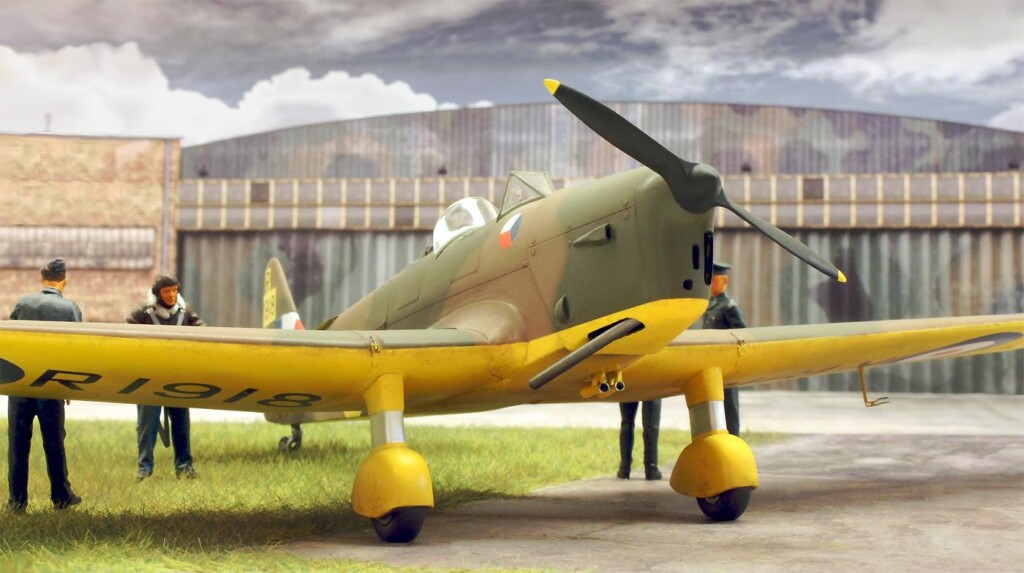
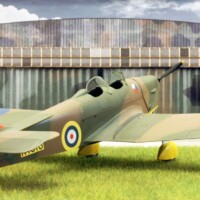

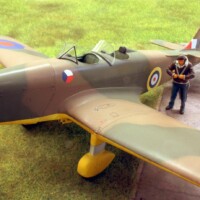
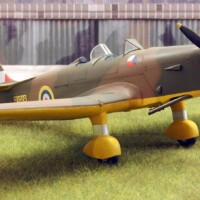
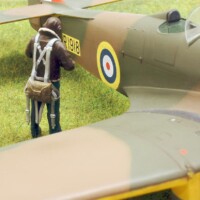
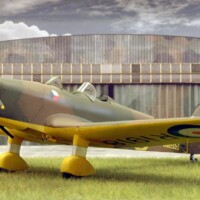
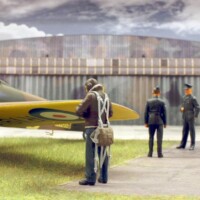
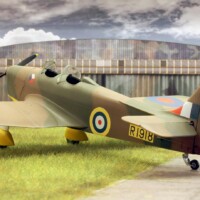
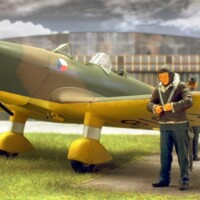
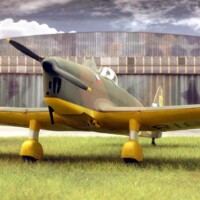
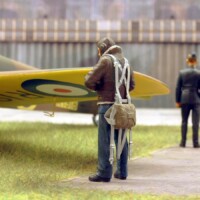
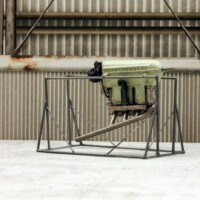

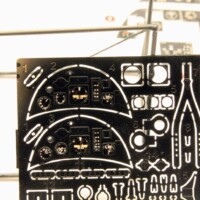

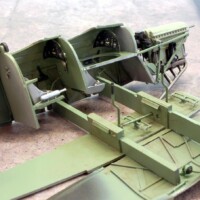

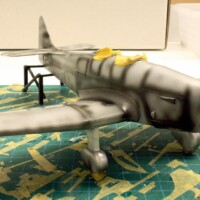
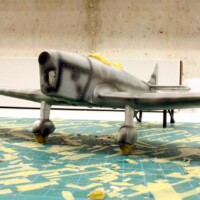
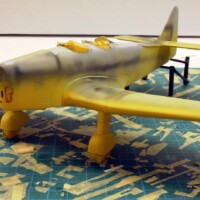
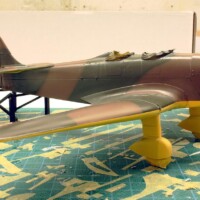
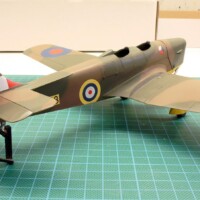
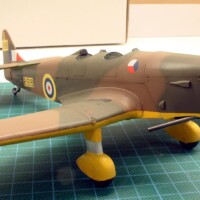
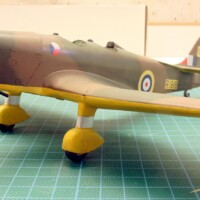
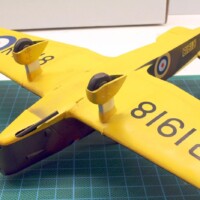
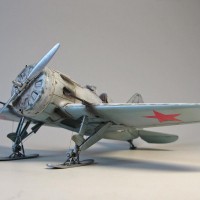
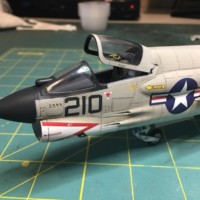
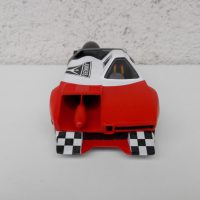
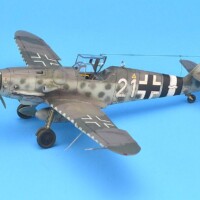
Another interesting and entertaining posting from you, Roland, and yet another terrific looking model in a realistic setting, the figures really add something to the photos. Your English is excellent, but I’m not sure we would refer to the “312th squadron”, I feel that “number 312 squadron” would be more appropriate. Keep up the good work.
Thank you very much for these inspiring words - and thank you also for the opportunity to " polish " my English! You are certainly right, I have corrected it!
Another winner, Roland! Excellent model and wonderful article!
Your words make me happy, thank you for the motivation, my friend!
Lovely work on this often ignored and important aircraft, well done Roland.
I say thank you very much!
Exellent result, Roland @rosachsenhofer
With this result and the way you took the photos makes it look like a real aircraft.
Thanks for sharing the valuable information.
I appreciate your words, thank you John!
Excellent build - I love the "model within a model", one of those "can't see it but I know it's there" deals.
Miles made some great stuff that does not get a lot of attention.
I value your words, thank you!
Really nice work (as usual) Roland, a nice history and a great modeling result. The figures really work with this model.
Tom, your recognition always pleases me!
Excellent write up on this aircraft & the kit. Very nice photography too ! Well done
Thank you for your words on the pictures and text, Jay!
A great-looking build!
Thank you very much Greg!